1. Timsit JF, Schwebel C, Bouadma L, Geffroy A, Garrouste-Orgeas M, Pease S, et al. Chlorhexidine-impregnated sponges and less frequent dressing changes for prevention of catheter-related infections in critically ill adults: a randomized controlled trial. JAMA. 2009; 301(12):1231–1241. PMID:
19318651.
2. Scheithauer S, Bürgel U, Bickenbach J, Häfner H, Haase G, Waitschies B, et al. External ventricular and lumbar drainage-associated meningoventriculitis: prospective analysis of time-dependent infection rates and risk factor analysis. Infection. 2010; 38(3):205–209. PMID:
20333433.
3. Babu MA, Patel R, Marsh WR, Wijdicks EF. Strategies to decrease the risk of ventricular catheter infections: a review of the evidence. Neurocrit Care. 2012; 16(1):194–202. PMID:
22045248.
4. Ramanan M, Lipman J, Shorr A, Shankar A. A meta-analysis of ventriculostomy-associated cerebrospinal fluid infections. BMC Infect Dis. 2015; 15(1):3. PMID:
25567583.
5. Jamjoom AAB, Joannides AJ, Poon MT, Chari A, Zaben M, Abdulla MAH, et al. Prospective, multicentre study of external ventricular drainage-related infections in the UK and Ireland. J Neurol Neurosurg Psychiatry. 2018; 89(2):120–126. PMID:
29070645.
6. Arabi Y, Memish ZA, Balkhy HH, Francis C, Ferayan A, Al Shimemeri A, et al. Ventriculostomy-associated infections: incidence and risk factors. Am J Infect Control. 2005; 33(3):137–143. PMID:
15798667.
7. Hoefnagel D, Dammers R, Ter Laak-Poort MP, Avezaat CJ. Risk factors for infections related to external ventricular drainage. Acta Neurochir (Wien). 2008; 150(3):209–214. PMID:
18278575.
8. Maki DG, Stolz SM, Wheeler S, Mermel LA. Prevention of central venous catheter-related bloodstream infection by use of an antiseptic-impregnated catheter. A randomized, controlled trial. Ann Intern Med. 1997; 127(4):257–266. PMID:
9265424.
9. Fellner A, Goldstein L, Lotan I, Keret O, Steiner I. Meningitis without meningeal irritation signs: What are the alerting clinical markers? J Neurol Sci. 2020; 410:116663. PMID:
31951834.
10. Tracy A, Waterfield T. How to use clinical signs of meningitis. Arch Dis Child Educ Pract Ed. 2020; 105(1):46–49. PMID:
30692129.
11. Horan TC, Andrus M, Dudeck MA. CDC/NHSN surveillance definition of health care-associated infection and criteria for specific types of infections in the acute care setting. Am J Infect Control. 2008; 36(5):309–332. PMID:
18538699.
12. Flint AC, Toossi S, Chan SL, Rao VA, Sheridan W. A simple infection control protocol durably reduces external ventricular drain infections to near-zero levels. World Neurosurg. 2017; 99:518–523. PMID:
28012890.
13. Flint AC, Rao VA, Renda NC, Faigeles BS, Lasman TE, Sheridan W. A simple protocol to prevent external ventricular drain infections. Neurosurgery. 2013; 72(6):993–999. PMID:
23467249.
14. Pronovost P, Needham D, Berenholtz S, Sinopoli D, Chu H, Cosgrove S, et al. An intervention to decrease catheter-related bloodstream infections in the ICU. N Engl J Med. 2006; 355(26):2725–2732. PMID:
17192537.
15. Pronovost P. Interventions to decrease catheter-related bloodstream infections in the ICU: the Keystone Intensive Care Unit Project. Am J Infect Control. 2008; 36(10):171.e1–171.e5.
16. Pronovost PJ, Goeschel CA, Colantuoni E, Watson S, Lubomski LH, Berenholtz SM, et al. Sustaining reductions in catheter related bloodstream infections in Michigan intensive care units: observational study. BMJ. 2010; 340:c309. PMID:
20133365.
17. Álvarez-Moreno CA, Valderrama-Beltrán SL, Rosenthal VD, Mojica-Carreño BE, Valderrama-Márquez IA, Matta-Cortés L, et al. Multicenter study in Colombia: Impact of a multidimensional International Nosocomial Infection Control Consortium (INICC) approach on central line-associated bloodstream infection rates. Am J Infect Control. 2016; 44(11):e235–e241. PMID:
27317408.
18. Selby LM, Rupp ME, Cawcutt KA. Prevention of central-line associated bloodstream infections: 2021 update. Infect Dis Clin North Am. 2021; 35(4):841–856. PMID:
34752222.
19. Mounier R, Lobo D, Cook F, Martin M, Attias A, Aït-Mamar B, et al. From the skin to the brain: pathophysiology of colonization and infection of external ventricular drain, a prospective observational study. PLoS One. 2015; 10(11):e0142320. PMID:
26555597.
20. Darouiche RO, Wall MJ Jr, Itani KM, Otterson MF, Webb AL, Carrick MM, et al. Chlorhexidine-alcohol versus povidone-iodine for surgical-site antisepsis. N Engl J Med. 2010; 362(1):18–26. PMID:
20054046.
21. Mimoz O, Lucet JC, Kerforne T, Pascal J, Souweine B, Goudet V, et al. Skin antisepsis with chlorhexidine-alcohol versus povidone iodine-alcohol, with and without skin scrubbing, for prevention of intravascular-catheter-related infection (CLEAN): an open-label, multicentre, randomised, controlled, two-by-two factorial trial. Lancet. 2015; 386(10008):2069–2077. PMID:
26388532.
22. Zhou YJ, Wu JN, Chen LJ, Zhao HY. Comparison of infection rate with tunneled vs standard external ventricular drainage: a prospective, randomized controlled trial. Clin Neurol Neurosurg. 2019; 184:105416. PMID:
31319234.
23. Garg K, Verma SK, Singh PK, Singh M, Chandra PS, Kale SS. Effect of external ventricular drain tunnel length on cerebrospinal fluid infection rates-a Bayesian network meta-analysis. World Neurosurg. 2022; 158:268–278.e4. PMID:
34774808.
24. Mikhaylov Y, Wilson TJ, Rajajee V, Thompson BG, Maher CO, Sullivan SE, et al. Efficacy of antibiotic-impregnated external ventricular drains in reducing ventriculostomy-associated infections. J Clin Neurosci. 2014; 21(5):765–768. PMID:
24411330.
25. Alleyne CH Jr, Hassan M, Zabramski JM. The efficacy and cost of prophylactic and perioprocedural antibiotics in patients with external ventricular drains. Neurosurgery. 2000; 47(5):1124–1127. PMID:
11063105.
26. Ratilal B, Costa J, Sampaio C. Antibiotic prophylaxis for surgical introduction of intracranial ventricular shunts: a systematic review. J Neurosurg Pediatr. 2008; 1(1):48–56. PMID:
18352803.
27. Dorresteijn KR, Brouwer MC, Jellema K, van de Beek D. Bacterial external ventricular catheter-associated infection. Expert Rev Anti Infect Ther. 2020; 18(3):219–229. PMID:
31994951.
28. Walton MN, Hamilton LA, Kennedy SJ, Veve MP, Rowe AS. Antibiotic prophylaxis and incidence of infection with external ventricular drains and intra-cranial pressure monitors. Surg Infect (Larchmt). 2022; 23(3):262–269. PMID:
35133886.
29. Scheithauer S, Möller M, Höllig A, Marx G, Thoröe S, Lopez-Gonzalez L, et al. Are chlorhexidine-containing dressings safe for use with ventricular drainages? Infection. 2014; 42(3):545–548. PMID:
24515936.
30. Talibi SS, Silva AH, Afshari FT, Hodson J, Roberts SA, Oppenheim B, et al. The implementation of an external ventricular drain care bundle to reduce infection rates. Br J Neurosurg. 2020; 34(2):181–186. PMID:
32046516.
31. Wong GK, Poon WS, Wai S, Yu LM, Lyon D, Lam JM. Failure of regular external ventricular drain exchange to reduce cerebrospinal fluid infection: result of a randomised controlled trial. J Neurol Neurosurg Psychiatry. 2002; 73(6):759–761. PMID:
12438486.
32. Park P, Garton HJ, Kocan MJ, Thompson BG. Risk of infection with prolonged ventricular catheterization. Neurosurgery. 2004; 55(3):594–599. PMID:
15335426.
33. Tunkel AR, Hasbun R, Bhimraj A, Byers K, Kaplan SL, Scheld WM, et al. 2017 Infectious Diseases Society of America’s clinical practice guidelines for healthcare-associated ventriculitis and meningitis. Clin Infect Dis. 2017; 64(6):e34–e65. PMID:
28203777.
34. Yaseen M, Al-Hameed F, Osman K, Al-Janadi M, Al-Shamrani M, Al-Saedi A, et al. A project to reduce the rate of central line associated bloodstream infection in ICU patients to a target of zero. BMJ Qual Improv Rep. 2016; 5(1):u212545.w4986.
35. Gupta P, Thomas M, Patel A, George R, Mathews L, Alex S, et al. Bundle approach used to achieve zero central line-associated bloodstream infections in an adult coronary intensive care unit. BMJ Open Qual. 2021; 10(1):e001200.
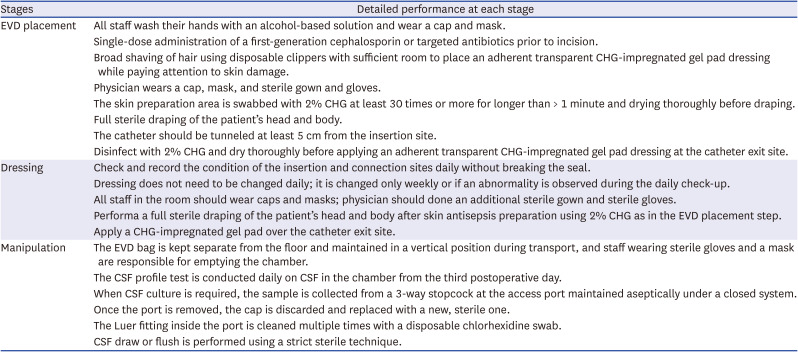
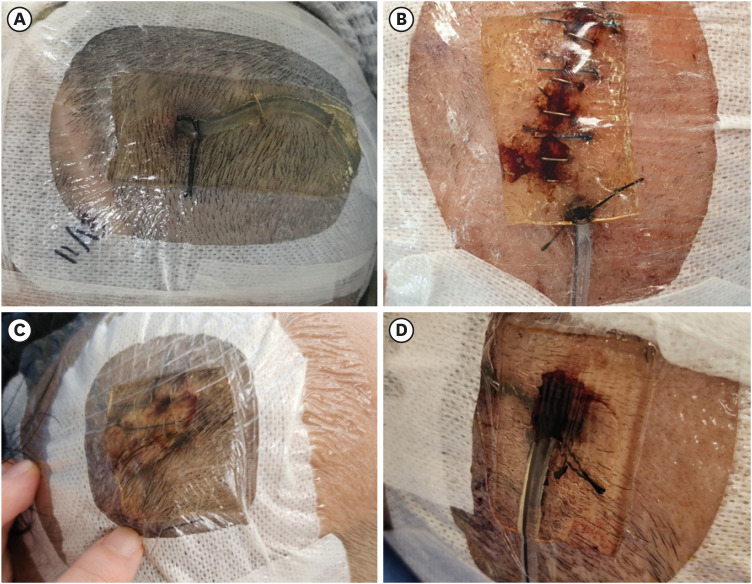
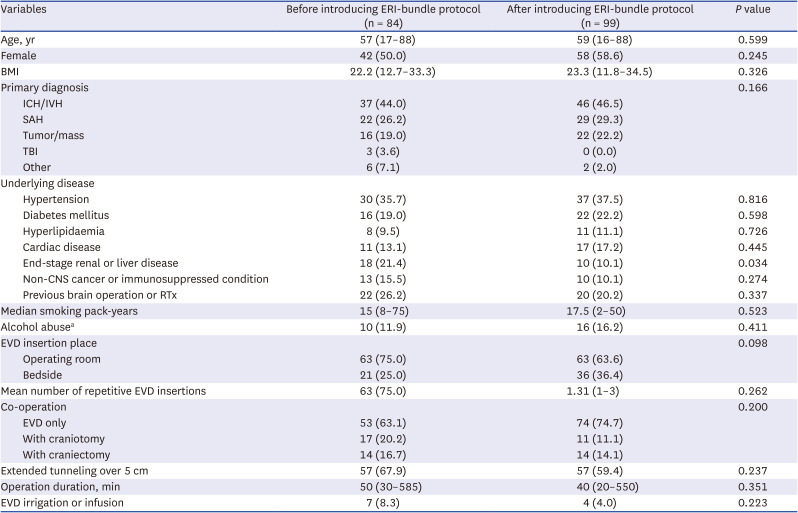

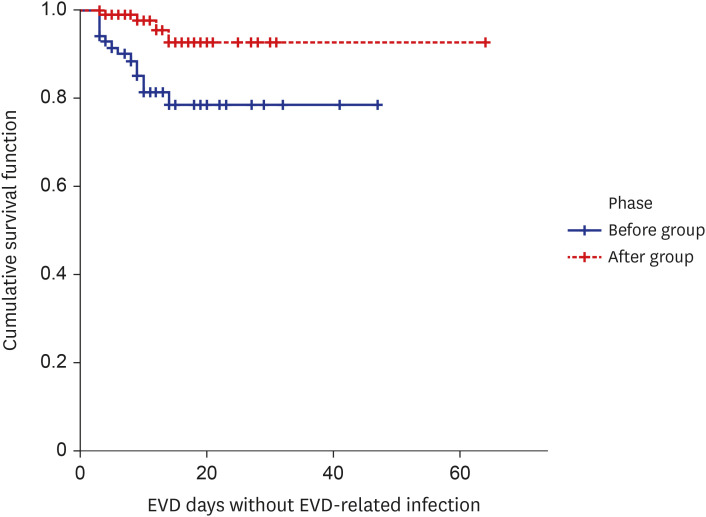





 PDF
PDF Citation
Citation Print
Print



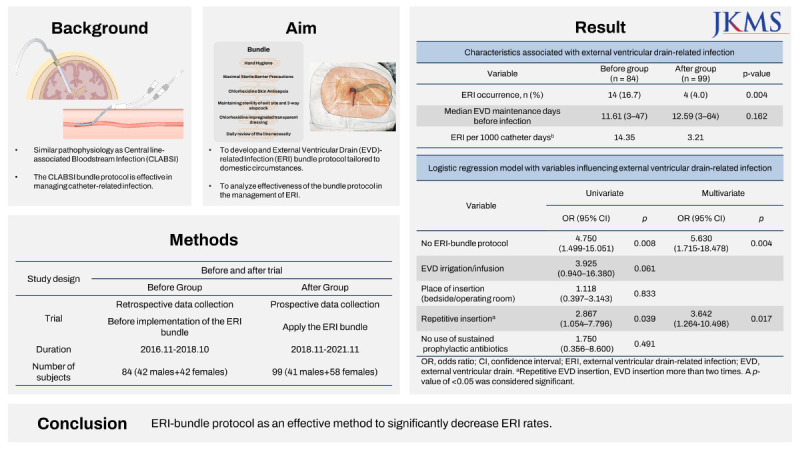
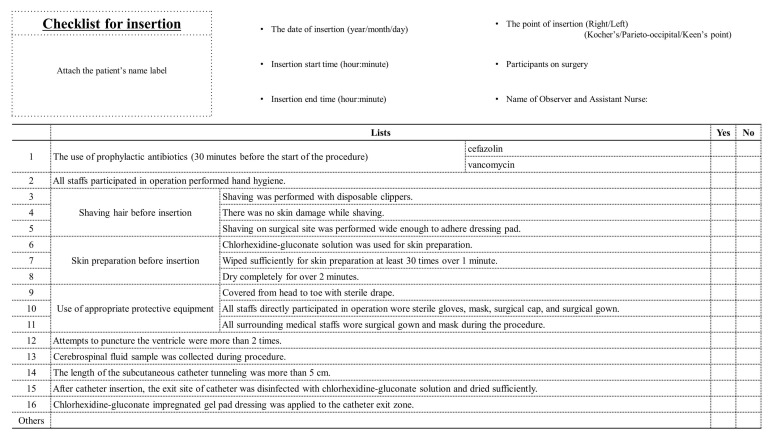
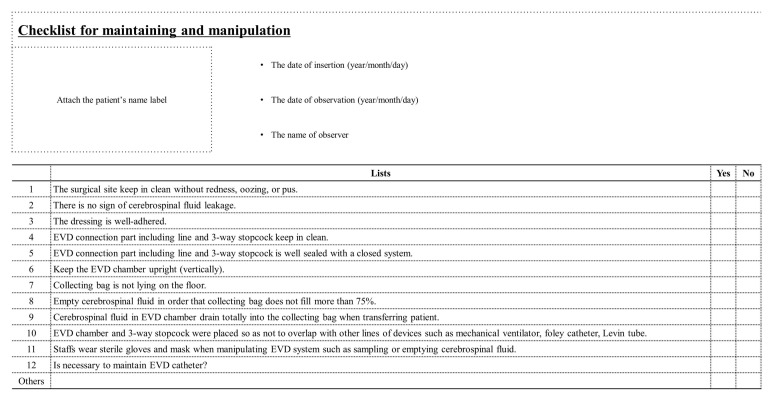
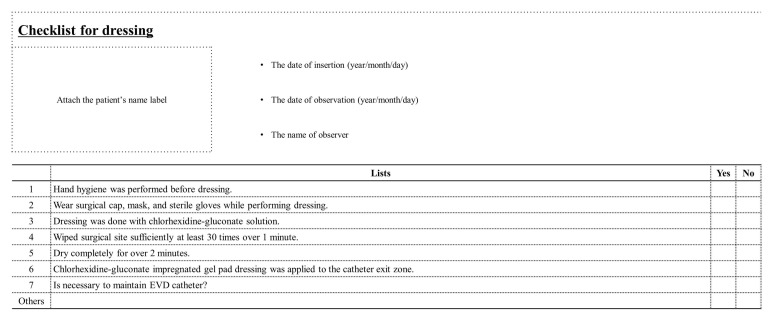
 XML Download
XML Download